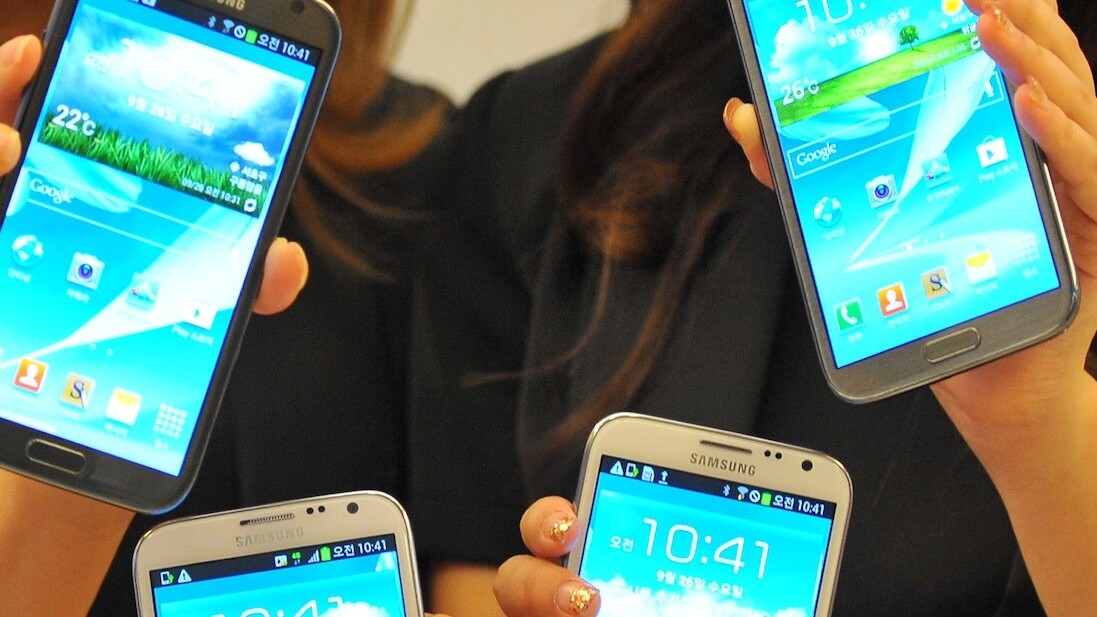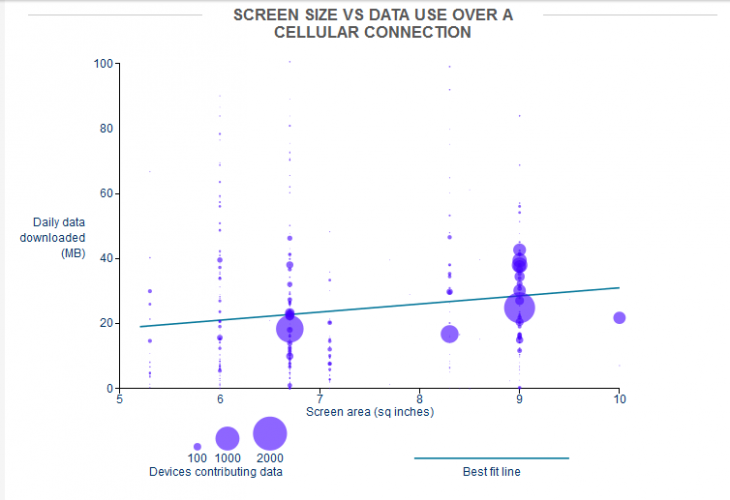
With a 4.8 inch screen, some folk thought that the Samsung Galaxy S3 was just a little on the large side for them. So the fact that Samsung went even further with its soon-to-launch S4 model – which comes in at whopping 5-inches – may well put even more people off. And all this before we even consider devices such as the Samsung Galaxy Note, which straddle the smartphone/tablet divide somewhat awkwardly.
But the fact is, mobile, Internet and entertainment go hand-in-hand – while you may prefer the smaller form-factor of the SGS2 or iPhone 5, there are millions who prefer the almost tablet-esque qualities of some of the latest “pocket” rockets.
But how much does screen-size actually affect how a user interacts with their phone? Is there a direct correlation between time spent browsing the Web, and the diagonal dimensions of their smart device? According to data published today by OpenSignal today, well, there isn’t – not through a cellular connection, at least.
Just to recap, OpenSignal – formerly known as OpenSignalMaps – is the company behind the eponymous app that helps create independent maps of mobile phone network coverage based on information crowdsourced from Android users (though an iPhone app is on the way).
With more than three million downloads, OpenSignal is among the biggest sources of independent data on the speed and coverage of mobile phone carriers. Rather than relying on coverage maps provided by networks themselves, OpenSignal opens up this data to anyone, so they can see for themselves which ones offer the best coverage where they are. This was a major update included as part of its new Android app which launched in January.
Data gleaned by OpenSignal is certainly proving invaluable – just last week, OpenSignal showed that T-Mobile was testing LTE on the SGS3 and SGS4 in eight US cities. And it’s probably only a matter of time before OpenSignal starts licensing and monetizing the data is collects from its users. But we digress.
Size does AND doesn’t matter
For its latest study, OpenSignal set out to compare the amount of data used on devices of different screen sizes, on both 3G and WiFi. Given OpenSignal is Android-only, it obviously doesn’t factor in iPhones. But given that Android constitutes more than half the smartphone market in most western countries, and there’s a myriad of different screen sizes across the board, it actually lends itself better to this test anyway.
The following devices were sampled for this report: the Samsung Galaxy Ace (6 square inches), Galaxy SI2 (6.7 square inches), Sony Xperia U (7.1 square inches), Galaxy Nexus (8.3 square inches) and the Galaxy S3 (9 square inches). And to qualify, each user had to have accessed both cellular and WiFi data on the same day, thus samples were restricted to regions with significant WiFi penetration. The reason? Well, to ensure users did have the option of using both.
Over the course of a month, OpenSignal’s data shows that there only seems to be a weak relationship between screen-size and data-consumption over cellular.

According to this, data consumption only increases by 75MB per month for every additional square-inch of screen real-estate. Compared to data downloads over a WiFi connection, the difference is much more pronounced.
Over WiFi, as screen sizes get bigger people tend to munch more data. Indeed, data consumption doubles between a 6 square-inch device (e.g. Galaxy Ace) and a device with a 9 square-inch screen such as a Galaxy S3. For every additional square inch of screen real-estate, this leads to 288MB of extra data downloaded each month.

So it seems that while out and about, screen size has no significant effect on how much a user taps data over a cellular connection. Certainly, not as much as you would otherwise have thought. But over WiFi, those on smaller-screened devices likely have access to laptops, desktops and other fixed ‘connected’ devices to consume data. Though if they have something a little more sizable, they’re more inclined to remain on it when they’re at home.
Image credit: KIM JAE-HWAN/Staff/Getty Images
Get the TNW newsletter
Get the most important tech news in your inbox each week.




